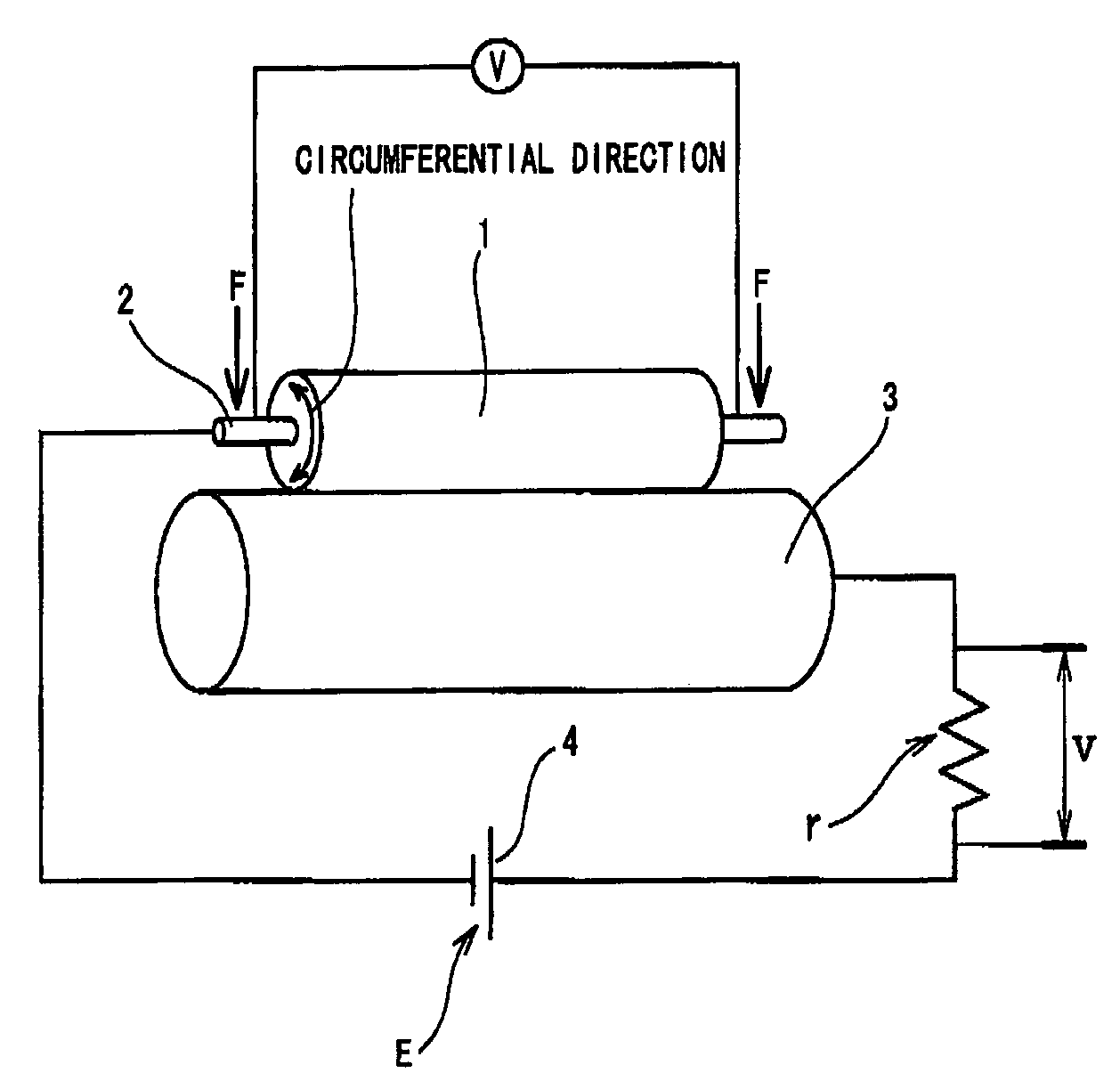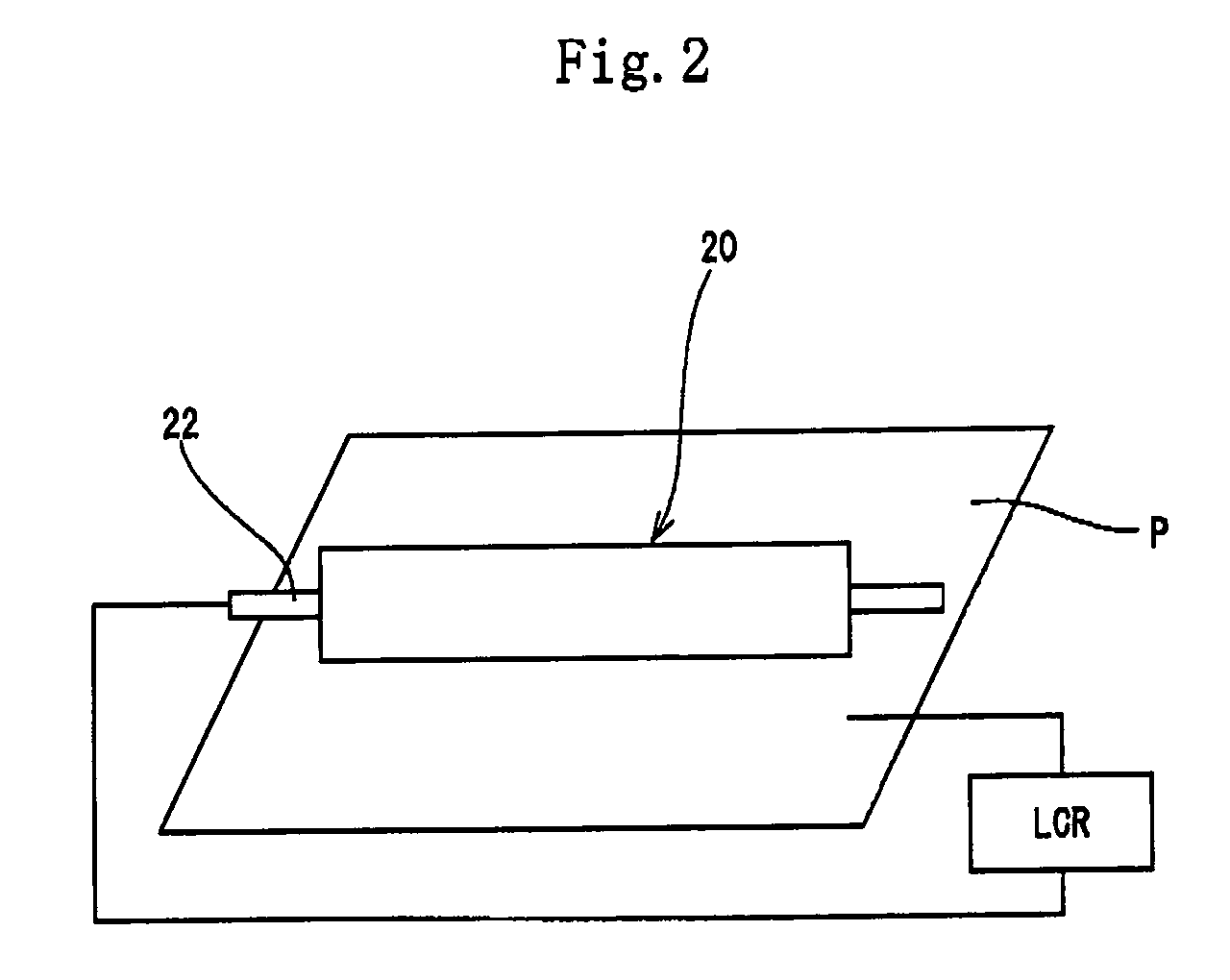Conductive roller
a technology of conductive rollers and conductive rollers, which is applied in the direction of shafts and bearings, corona discharge, instruments, etc., can solve the problems of liable toner dispersion, achieve high-quality images, prevent toner dispersion, and improve the electrical characteristics of conductive rollers
- Summary
- Abstract
- Description
- Claims
- Application Information
AI Technical Summary
Benefits of technology
Problems solved by technology
Method used
Image
Examples
examples 1 through 16
[0069]As shown in table 1, the value of common logarithm indicating the electric resistance of the conductive roller of each of the examples 1 through 16 fell within the scope of the present invention. The electrostatic capacity of each conductive roller at the frequency of 100 Hz fell within the scope of the present invention, namely, less than 50 pF. The conductive addition salt 1 was used in examples 1 through 6 and 16. The conductive addition salt 2 was used in the examples 7 through 10. The conductive addition salt 5 was used in the example 11. The conductive addition salt 3 was used in the example 12. The conductive addition salt 4 was used in the example 13. In this manner, the kind of the anion-containing salt having the fluoro group and the sulfonyl group was varied in the examples. The conductive elastic layer of each of the examples 14 and 15 did not contain any conductive addition salt.
[0070]The cations of the conductive addition salts 5, 3, and 4 contained in the conduc...
PUM
 Login to view more
Login to view more Abstract
Description
Claims
Application Information
 Login to view more
Login to view more - R&D Engineer
- R&D Manager
- IP Professional
- Industry Leading Data Capabilities
- Powerful AI technology
- Patent DNA Extraction
Browse by: Latest US Patents, China's latest patents, Technical Efficacy Thesaurus, Application Domain, Technology Topic.
© 2024 PatSnap. All rights reserved.Legal|Privacy policy|Modern Slavery Act Transparency Statement|Sitemap



